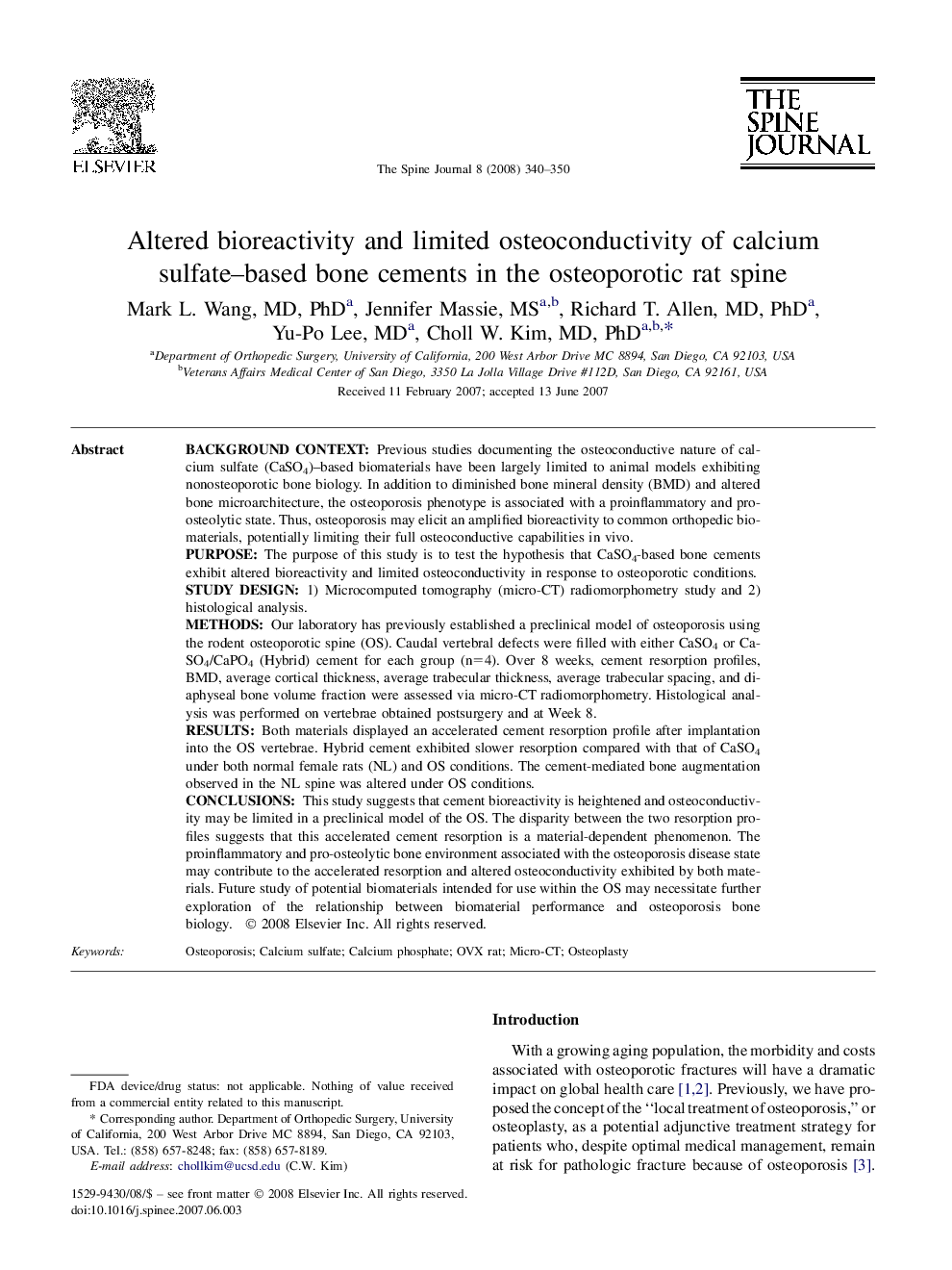| Article ID | Journal | Published Year | Pages | File Type |
|---|---|---|---|---|
| 4099338 | The Spine Journal | 2008 | 11 Pages |
Background contextPrevious studies documenting the osteoconductive nature of calcium sulfate (CaSO4)–based biomaterials have been largely limited to animal models exhibiting nonosteoporotic bone biology. In addition to diminished bone mineral density (BMD) and altered bone microarchitecture, the osteoporosis phenotype is associated with a proinflammatory and pro-osteolytic state. Thus, osteoporosis may elicit an amplified bioreactivity to common orthopedic biomaterials, potentially limiting their full osteoconductive capabilities in vivo.PurposeThe purpose of this study is to test the hypothesis that CaSO4-based bone cements exhibit altered bioreactivity and limited osteoconductivity in response to osteoporotic conditions.Study design1) Microcomputed tomography (micro-CT) radiomorphometry study and 2) histological analysis.MethodsOur laboratory has previously established a preclinical model of osteoporosis using the rodent osteoporotic spine (OS). Caudal vertebral defects were filled with either CaSO4 or CaSO4/CaPO4 (Hybrid) cement for each group (n=4). Over 8 weeks, cement resorption profiles, BMD, average cortical thickness, average trabecular thickness, average trabecular spacing, and diaphyseal bone volume fraction were assessed via micro-CT radiomorphometry. Histological analysis was performed on vertebrae obtained postsurgery and at Week 8.ResultsBoth materials displayed an accelerated cement resorption profile after implantation into the OS vertebrae. Hybrid cement exhibited slower resorption compared with that of CaSO4 under both normal female rats (NL) and OS conditions. The cement-mediated bone augmentation observed in the NL spine was altered under OS conditions.ConclusionsThis study suggests that cement bioreactivity is heightened and osteoconductivity may be limited in a preclinical model of the OS. The disparity between the two resorption profiles suggests that this accelerated cement resorption is a material-dependent phenomenon. The proinflammatory and pro-osteolytic bone environment associated with the osteoporosis disease state may contribute to the accelerated resorption and altered osteoconductivity exhibited by both materials. Future study of potential biomaterials intended for use within the OS may necessitate further exploration of the relationship between biomaterial performance and osteoporosis bone biology.
